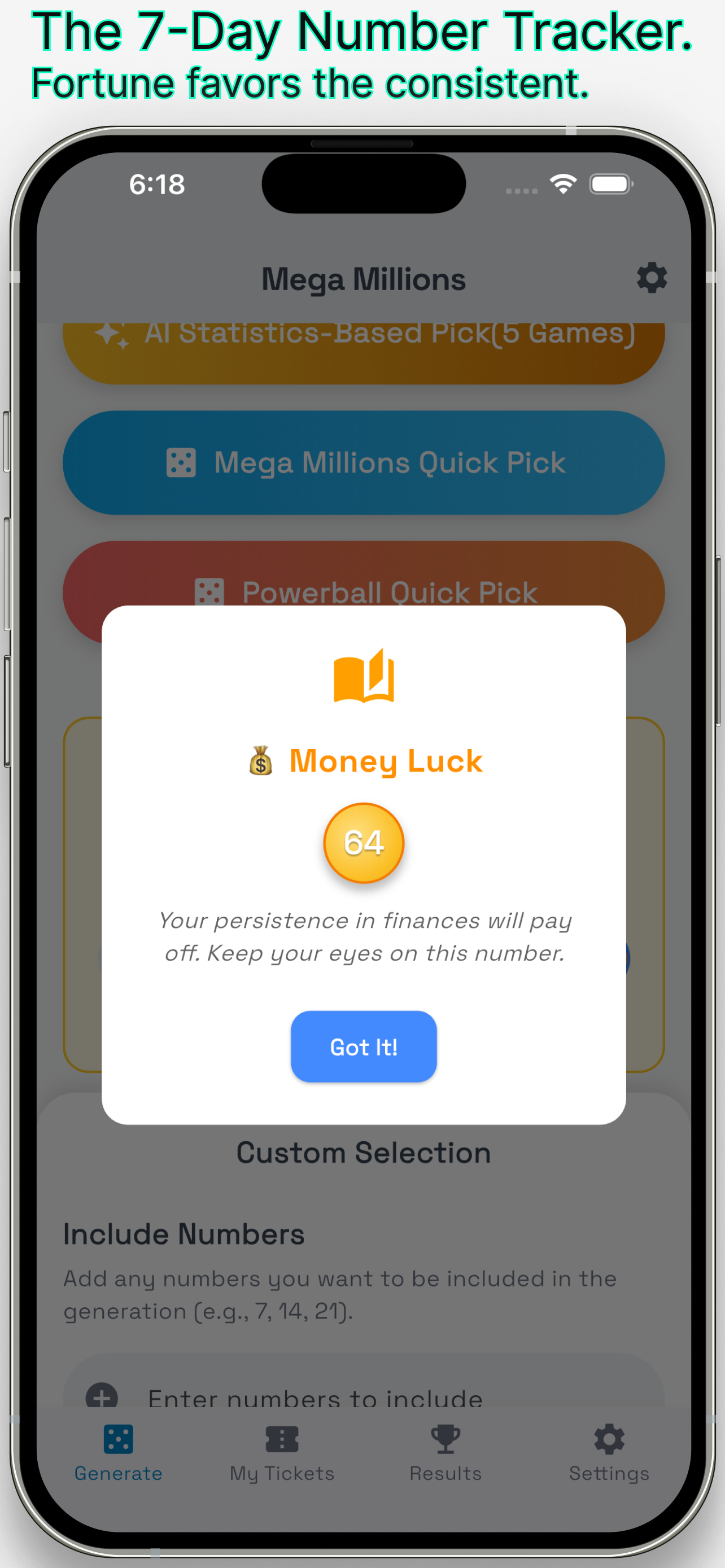AI Statistics-Based 5-Game Special Pick
More than just random numbers. Our exclusive AI analyzes hundreds of past draw frequencies to instantly recommend 5 statistically advantageous number combinations.
- **Data-Driven Predictions** for optimal combinations.
- AI-generated tickets are marked with a **golden border**.
- Get 5 games instantly with a single tap.

